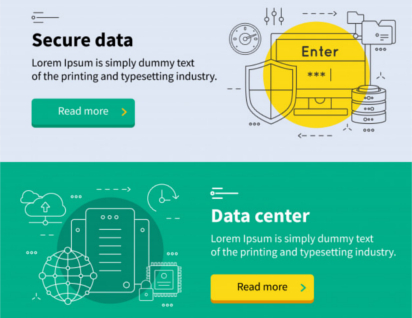Manufacturing
Benefits of Custom Applications in Manufacturing
Custom applications can offer significant advantages over off-the-shelf solutions – especially when it comes to business process management and digital transformation.
No matter what configuration you’re promised, when you’re buying software off-the-shelf, there’s always going to be some manual manipulation of data to connect your software stack, or some clunky inefficiencies you need to tolerate, ultimately resulting in worse ROI.
But it doesn’t have to be this way.
Custom applications are not as expensive as you might think and can offer significant advantages over out-of-the-box solutions – especially when it comes to business process management and digital transformation.
Here are 5 advantages of custom application development we’ve seen realized by our clients.
Automate repetitive tasks
Custom applications make everyone’s life easier by automating boring, repetitive tasks.
It does this in two big ways
Automatically moving data
Custom applications aren’t only about a custom interface or a custom experience.
To run efficient business processes, data needs to readily flow between disparate systems. This job must be completed either way, but a custom application can make it much easier by automating the process rather than relying on manually exporting, converting, and re-uploading it.
Automatically manage workflows

A significant amount of time is spent daily by teams moving projects along workflows or waiting for a project to move to the next phase.
For instance, let’s say you need to email a manager to get approval for something.
That added manual step, played out again and again, can be a serious impediment to business efficiency:
- You have to remember to send the email
- Your manager must get the email
- Your manager must reply to the email
It might seem like a small thing, but over time these micro-roadblocks add up to major delays.
Facilitate collaboration

Businesses have increasingly complicated systems to serve customers.
The days of distinct departments are, if not gone, definitely on the way out.
Businesses need to be adaptive, pulling expertise from across their functions to better serve customers.
It means collaboration takes on a newfound importance.
However, out-of-the box solutions tend to be bad at integrating with each other. To collaborate, people have to move from program to program, usually relying on something like instant messaging or email to help them along.
A failure to collaborate within programs has non-trivial consequences:
- Processes either take longer (as the “official” workflow fails to reflect reality), or processes are extremely ad-hoc and prone to breaking down.
- Systems are difficult to automate, if they’re able to be automated at all.
- Systems are difficult or impossible to scale.
But beyond avoiding these outcomes, facilitating collaboration is just a good idea because it has many spin-off benefits.
For instance, custom apps that connect existing tech stacks enable employees to spend more time doing what they actually like (and what helps the business) and less time moving data from A to B.
Second, easy collaboration makes working with other teams and departments enjoyable, ultimately improving outcomes.
Finally, easy collaboration makes organizations more dynamic and agile. Insights travel further and faster, and organizations can act on new ideas and transient opportunity more effectively.
Everyone can access the data they need

For back-office functionality, a large amount of time and effort goes into pulling together data from disparate sources. Financial data is one example of this. Say, for instance, a CFO needs to pull together data for an annual report. They might have to pull from 10 different places across the organization. Requesting data, receiving spreadsheets, and digging for specific numbers takes time.
Now, if this is a once-a-year process, it’s likely low on an organization’s list of things to fix. But what if you’re undergoing that process for weekly reports? Or monthly board updates?
There are dozens of processes that happen regularly that require data to be imported and transformed — processes that can be time-consuming and frustrating to complete.
A custom-built application –can help alleviate this plain. First, customization automates workflows so less data needs to be compiled manually. So you can automate workflows that make up business processes.
Second, over time you can begin to streamline business processes themselves by giving users access to data and information in a format they can actually use it in. And what these tools respectively bring to the table is centralized and streamlined access to data and the ability to quickly create and publish content.
However, most businesses have yet to realize the true value of these sorts of tools: they allow anyone to quickly and easily access information from user-defined permissions. This means that sure, you can generate a report automatically to accelerate your reporting workflows.
But with custom application development, you can directly improve the business process that the workflow is a part of. In other words, you can give board members access to data and content directly, so there IS no process.
By enabling data access, organizations can redefine what processes they need to do to run their business and ultimately, reduce their process overload to maximize efficiency, transparency, and growth.
Security
If you have a custom application, your data is (on average) more secure than if you’re using an out-of-the-box solution. Why? Because you’re a much smaller target .Say your security is equal to a major out-of-the-box solution. Different, but equally secure.

If a hacking group breaks your software, they get your stuff. Which, obviously, is a problem. However, if a hacking group cracks an out-of-the-box solution, they get all their client’s data.
For you, the client, the result is the same — your data is in hands it’s not supposed to be in. But how many hacking groups do you think are interested in breaking into your company specifically? Probably not that many.
Especially when, for the same amount of work, they can break into maybe 10 or 10,000 companies, depending on how successful an out-of-the-box solution is. Which means even if the security of your custom application is say, 1 hack for every 1,000,000 attempts, it might only be attempted twice a year.
Major out-of-the-box solution providers are defending dozens or hundreds attacks daily.
It’s just basic stats.
Maximize technology investment

Finally, custom application development and, specifically, can help companies maximize technology investment by using tools people already know. The problem with buying new tools, rather than expanding the ones that you have, is that people don’t (or don’t want) to use them. Getting technological adoption is always a challenge.
Even if the platform is intuitive, there is always a learning curve for some users. Getting your team fully up to speed is a long-term project that needs to be managed as such. Suffice to say, buy-in is difficult.
When you build a custom software application that’s piggy-backed on an existing tool, adoption goes much smoother:
- Interfaces and systems work the way people think they will (since they’re already familiar)
- Ways of working stay relatively static















